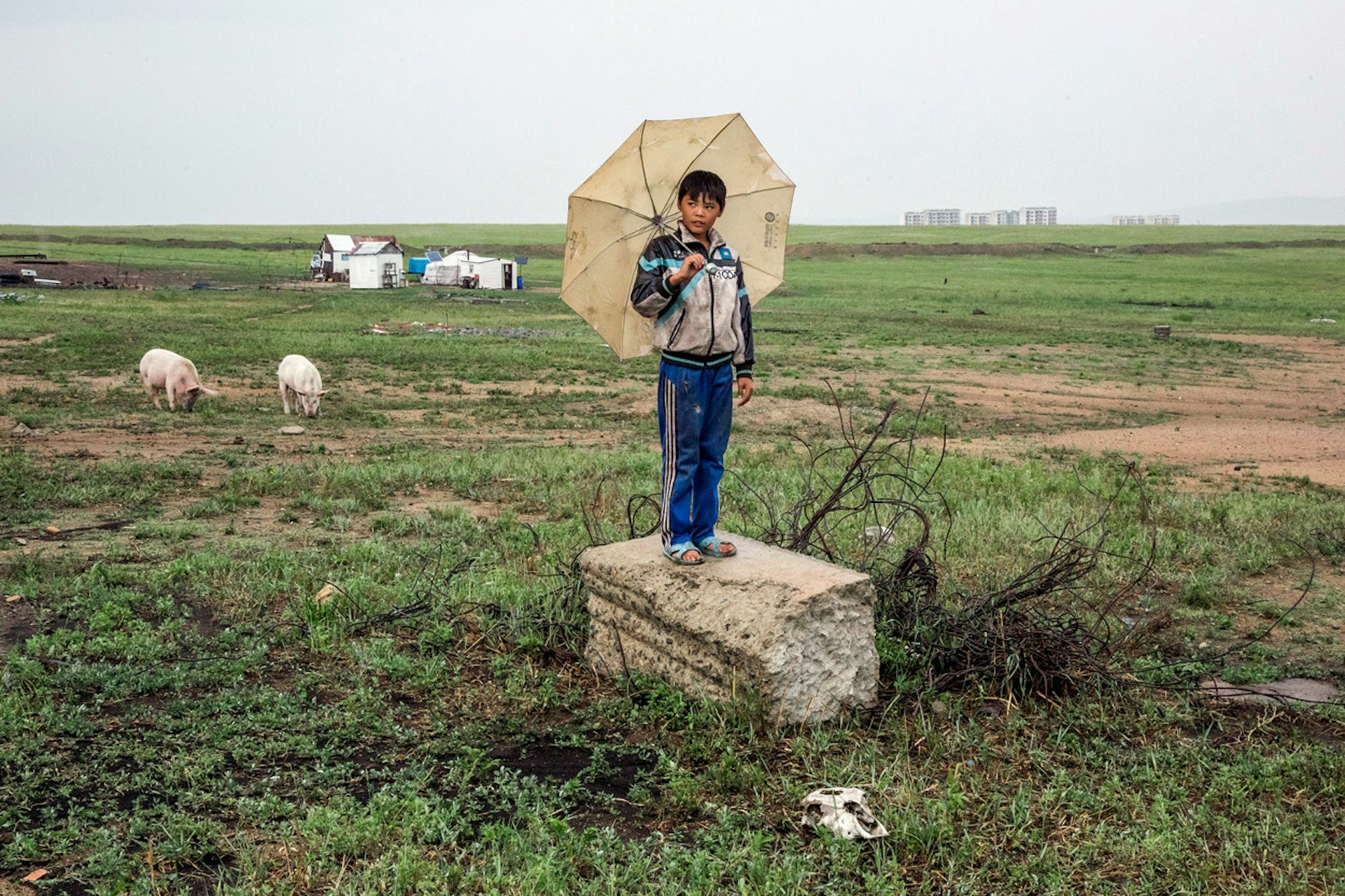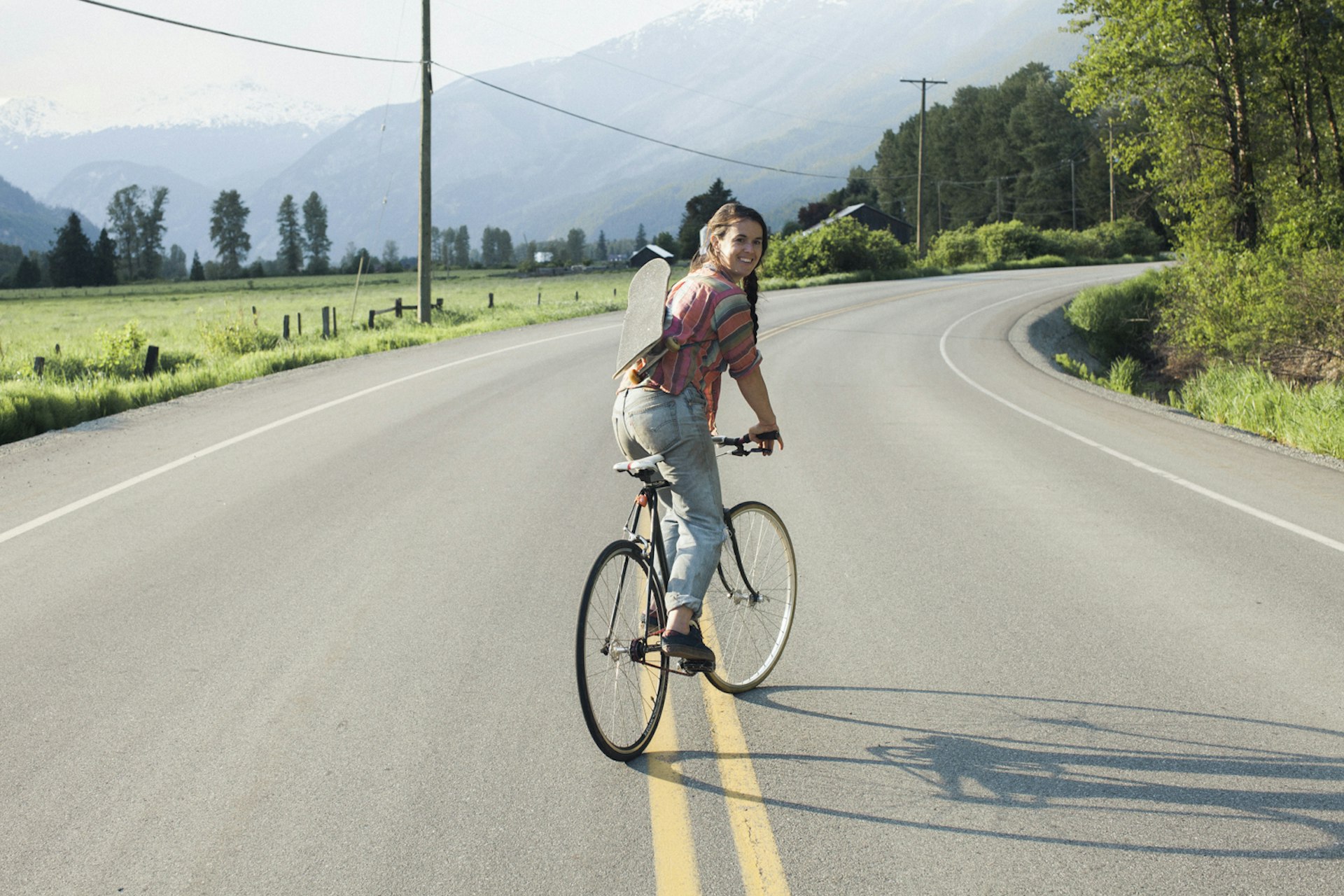
Story Behind the Still: Life in a ghost town
- Text by Noora Ismail
- Photography by Vlad Sokhin
Vlad Sokhin has been covering environmental and human rights issues through photography for over 11 years. His series The End of Mardai is an exploration of a secret ex-Soviet town abandoned by its inhabitants after the fall of the USSR.
After rich uranium reserves were discovered there, Mardai was gradually populated by a community of Russian workers and officials. But since the USSR’s collapse, all that remains is disused buildings which visiting opportunists rip apart in search of metal to sell to the Chinese and nearby towns.
Baira, the subject of this photograph, often comes to Mardai to stay with a family friend called Bator – he and his wife are the only permanent residents in the area – during the holidays.
For the project, Vlad decided to follow them both everywhere, telling the story of the town through their eyes.
 “As a photographer, it’s really hard to do something in Mongolia as there aren’t many topics left to cover. But I was doing some research on Google Earth – just zooming in and out on the eastern part of the country, which I have never been to.
“As a photographer, it’s really hard to do something in Mongolia as there aren’t many topics left to cover. But I was doing some research on Google Earth – just zooming in and out on the eastern part of the country, which I have never been to.
“I found a strange railway that connects Russia and Mongolia but doesn’t connect with the capital. It’s just a dead-end line. Why would you build a railway unconnected to anywhere else?
“I zoomed in closer and found what looked like the remains of a town, but it was not named and it could only be found on satellite images.
“I discovered that the railway was once used to send uranium back to Russia and carried out the occasional passenger service.”
“I also found that Eastern Mongolia and the area around Mardai has one of the highest cancer rates in the country. The uranium pit has since been converted into a water well.
“Bator, one of the town’s only residents, has no other choice than to drink from it. He says he doesn’t have any problems… but that other nomadic families living around the area have seen birth defects in their animals.
“Baira, the boy in the picture, spends every summer there with Bator and his wife – who are family friends – helping them with the animals. When there’s nothing to do, he’d find creative ways of playing in the ghost town.
“In this image, which I took last year, he had taken a broken umbrella to go to play near the well.
“We spent a lot of time together for my series, The End of Mardai and he would often take me with him near the dilapidated buildings in the area.
“Mongolia is one of my favourite places in the world. I like the wilderness, the space; You can be alone and barely see the horizon because it’s so huge. That gives a certain sense of freedom.
“I don’t think they really use internet or even have much need. They watch TV sometimes with energy created from solar panels.
“I’ve been there four times now and I would say they don’t really know about the other way of life.
“People go to town, buy what they need and come back. It’s their choice. There, you can just move, build your tent, and you don’t need to ask for anybody’s permission.”
Check out the online portfolio of photographer Vlad Sohkin.
This photograph appears in Huck 58 – The Offline Issue. Buy it in the Huck Shop now or subscribe today to make sure you never miss another issue.
Enjoyed this article? Like Huck on Facebook or follow us on Twitter.
